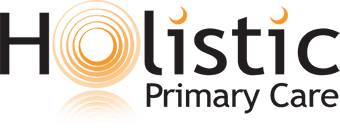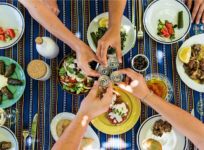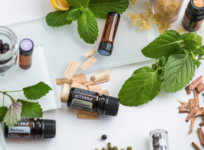You can tell a lot about people by how they view the H1N1 “Swine” flu.
Depending on who you talk to, H1N1 is either the scourge of the decade or just another nasty but ultimately insignificant bug like Bird Flu, West Nile, and other “coming plagues” that came—and went—before it.
Some folks say we must prepare for the worst with contingency plans for China-style quarantines and massive stockpiles of that precious antidote: Tamiflu. Others say this is irrational hysteria and marketing hype.
Some health authorities say the H1N1 vaccines are safer than spring water, and should be given to every one this side of the grave. They lament the vaccine shortage as a major public health travesty. If there’s a wee risk of rare adverse effects, it is vastly outweighed by the promise of preventing a debilitating, potentially lethal flu.
Other equally authoritative, intelligent people argue with similar vigor that the vaccines—even the so-called “mercury free” ones—are still unproven, and their long-term consequences totally unknown. The travesty, they say, is not the shortage of shots, but the fact that people are being scared into accepting a questionable injection to protect against a non-problem.
Where Data Lack, Opinions Reign
Over the last few months, I’ve talked to a lot doctors about H1N1. Some have had it themselves, most have seen it in patients. They voice an astonishingly wide range of opinions about its severity, best modes of prevention and treatment, and the risk versus benefit of the vaccines.
Some say if your immune system is healthy, you can easily fend off H1N1, and that the best public health effort would be to ramp up peoples’ intake of vitamin D, B-vitamins, fish oils, iodine, magnesium, and other immune-system boosters. Others say this is…ahem…hogwash. They say there’s no real evidence supporting nutraceuticals or herbs for protection against H1N1, and point out that unlike other flu strains that prey on the elderly, the very young, and the otherwise weak, H1N1 hits people who are relatively strong and healthy.
A few doctors say they’ve successfully treated themselves and patients with homeopathics. Others, of course, think that’s pure placebo effect. Some advocate Tamifu. Others are unimpressed with it, saying that at best it might shorten the course of illness by a day or two, but is not nearly the life-saver that the public—or the government—wants to believe it is.
Some insist all pregnant women get the vaccine, as the risk of swine flu death is particularly high during pregnancy. Others consider vaccinating pregnant women akin to malpractice, putting mother and fetus at risk for severe adverse reactions.
One physician friend said that the risk-to-benefit ratio would seem to favor giving the vaccine to at-risk people…until you see your first case of Guillian-Barré. This “rare” adverse event is not easily brushed off when it’s happening to your patient.
Of course, the same could be said of a fatal bout of H1N1 flu.
A Few Facts…
At the time of this writing, the World Health Organization has recorded a grand total of just over 482,300 laboratory-confirmed cases of pandemic H1N1 flu in 199 countries in 2009. There have been 6,071 deaths as of November 1. These, as many commentators point out, are probably underestimates, since many countries are no longer testing individual cases.
On the other hand, in many parts of the world, any flu is considered H1N1unless proven otherwise. But the proof never happens because there’s no testing.
Incidence and mortality estimates, like everything else about this flu, vary widely.
A recent New York Times article cited over 2 million cases of H1N1 flu and just about 4,000 deaths in the US, with a population of about 300 million. China, with a population of over 1 billion, and some very strict quarantine practices, has had a total of 59,000 cases, and just over 30 deaths, the article said.
WHO has declared H1N1 a “pandemic,” a very scary word, though it means simply that human illness has been confirmed in two or more countries in a single WHO region, plus at least one other country in a separate region. Moreover, WHO rated the severity of this pandemic as “moderate” in terms of its impact on health systems, social, and economic functioning.
Most people, WHO notes, recover from infection without need for hospitalization or medical care. So far, in most of the world, levels of severe illness from H1N1 appear similar to levels seen during past flu seasons with other strains. WHO is concerned about serious illness and deaths among young people, pregnant women, and those with pre-existing conditions like diabetes. But on the whole, WHO is very far from crying “plague!”
On the matter of vaccines, the Department of Health & Human Services Vaccine Adverse Events Reporting System has recorded a total of 1,922 adverse events as of Nov. 10, 2009, following delivery of almost 34 million doses of H1N1 vaccine (http://vaers.hhs.gov/resources/2009H1N1Summary_Nov9.pdf). The vast majority of these events were not considered serious or life threatening. HHS records a total of 84 serious events, 6 deaths, and 4 cases of vaccine associated Guillian-Barré syndrome.
These figures carry all the limitations of any voluntary registry data: reporting is haphazard and an unknown number of events may go unrecorded; registries like VAERS do not account for potential long-term sequelae that may not arise until months or years after vaccination.
But judging from best available data, questionable though it might be, it doesn’t seem like massive numbers of people are dropping dead in the street from H1N1, nor is the vaccine killing significant numbers of those who get it.
Our Virus, Our Selves
What’s really interesting about H1N1 is the way it seems to mirror back to people what they fear most and trust least. In a way, our individual reactions and responses to this bug are telling us more about our human nature, than the nature of the virus or its potential health consequences.
If you’re mistrustful of the federal government, then the fed’s H1N1 response is clear evidence of it’s socialist agenda for centralization of power and curtailment of individual freedoms. If not quite that extreme, then it’s something “the liberals” are using as a pretext for ramming universal healthcare through Congress. You don’t have to look too hard in the right wing blogosphere to find such views.
If you distrust big corporations, particularly of the pharmaceutical type, then you likely see the H1N1 “crisis” as a bogus threat brewed up by the drug industry to push product and reap profit. Recent regulatory moves against natural products companies promoting supplements or homeopathics to treat Swine Flu will only underscore that belief.
If you see the natural world as a fundamentally hostile place full of visible and invisible threats that can only be neutralized by high-tech human ingenuity, then you’ve probably already gotten the shot, you’ve stockpiled your Tamiflu, and Purell has become a major line item in your monthly budget.
On the other hand, if your faith is rooted in “the healing power of nature,” then you’re probably avoiding vaccines and antiviral drugs like the plague, but upping your intake of antioxidants and immune-system builders.
H1N1 has given the anti-immigrant “patriot” crowd yet another reason why we should seal the borders, hunker down, and do our best to keep “them” away from “us.” Need we remember just where those first cases of Swine Flu showed up last Spring? Of course, those who hold such views tend to ignore the fact that the initial locus of H1N1 illness was a massive Granjas Carroll de Mexico hog farm owned by US pork giant, Smithfield Farms.
Global citizen types point to H1N1’s world-wide spread as evidence of a need for greater international cooperation. Viruses, after all, are color-blind, creedless, and don’t acknowledge borders.
The trouble is that important and complex questions about H1N1—and epidemic infections in general—are being dumbed down, or worse yet, completely drowned out by all the bloviation.
What really constitutes a public health crisis? When—if ever–do public health imperatives trump individual rights? Is it wise to put all our infectious disease control eggs into the basket of vaccines and high-tech drugs? What do we really know about human vulnerability to pathogens like H1N1? Likewise, what do we understand about adverse vaccine reactions and the people who get them?
If Swine Flu is really the threat that governments around the world say it is, if it warrants extension of “special powers” to agencies like the Centers for Disease Control, then doesn’t it make sense to actually study whether common and relatively inexpensive things like vitamins, minerals, omega-3s, probiotics, homeopathics, botanicals and plant-derived essential oils could improve immune system function?
For every reproach of a supplement company’s claim, shouldn’t there be some research to see if there might actually be something to that claim? Wouldn’t we want people to have access to the broadest possible range of potentially helpful remedies? After all, this IS a crisis. Or is it?
Swine flu was so-named, much to the meat industry’s chagrin, because it originally came from pigs. Public health authorities have gone to great lengths to reassure us that H1N1 is not routinely transmitted from pigs to people. But as several eco-conscious writers have pointed out, the role of industrial agriculture and it’s CAFOs (“Concentrated Animal Feeding Operations” aka “feedlots”) in generating virulent pathogens cries out for serious research.
Is this question even on the public health docket? Or is it more comfortable to just write it off as another attempt by the “enviros” and the animal rights crowd to forward their anti-capitalist agenda.
Pure science is rare, and it is unlikely that we’ll ever have entirely rational and scientific debates about something as complex and emotionally charged as a potentially lethal flu epidemic. But because the stakes are high, we need to be as vigilant about overly simplistic agendas, entrenched positions, industrial influences, and knee-jerk policies as we are about the virus itself. They can be just as dangerous.







